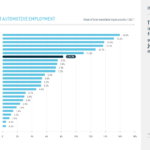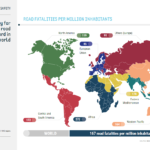Many states in the U.S. are facing budget deficits this year. According to one estimate states collectively will face an estimated $80 B in deficits. California is one of the states with a huge budget shortfall. Today the rating agency Fitch downgraded California to A-minus and is just eight days away from issuing IOUs unless lawmakers solve the crisis.
The following are some examples of budget deficit news headlines:
- Strickland: Ohio facing $7 billion deficitÂ
- Michigan’s budget deficit gets deeper
- Florida faces $1.5 billion budget deficit
- State budget deficit grown to $12.5B, says Paterson
- Arizona Budget Deficit Worst in the United States
Faced with the shortfall many states are cutting services and increasing fees on items such as auto licenses, title, registration, etc. Some local governments are adding traffic red light cameras to catch speeders and generate additional revenue. One of the worst fees that is becoming popular is the so-called “crash tax” , which is basically fees charged for fire and police response when a person is involved in an accident. The logic behind this is that if one is involved in an accident he/she has to pay for the emergency services they receive. Mostly this fee is charged to the insurance carrier. However in some cases the drivers who caused the accident have been sent the bill.
I wanted to find out why many states are facing budget shortfalls now. The following graphs are the result of my analysis.
Click to Enlarge Image
The above chart shows that since mid-2006 the state and local government social benefits spending as a percentage of current receipts has been increasing consistently while all four main type of tax revenues have been either flat to down or went up very slightly. Income, Sales, Property and Taxes on corporate income have all been below social spending in 2008. Sales tax revenues and corporate tax incomes are on a downward slope due to the current recession. Property taxes for all states have stayed in the 20% range since 2002. Higher unemployment rates projected for the rest of this year will push social spending higher and cause other tax revenues to fall.
A historical graph of the state and local revenues and social spending is shown below. This chart also shows that social spending as a percentage of current receipts has increased over the years.
Click to Enlarge Image
There are other causes of budget deficits that are not addressed in the analysis. Some of them include reckless spending on wasteful projects, high salaries paid out to current government employees, liberal retirement,health care benefits offered to retired workers, etc.



